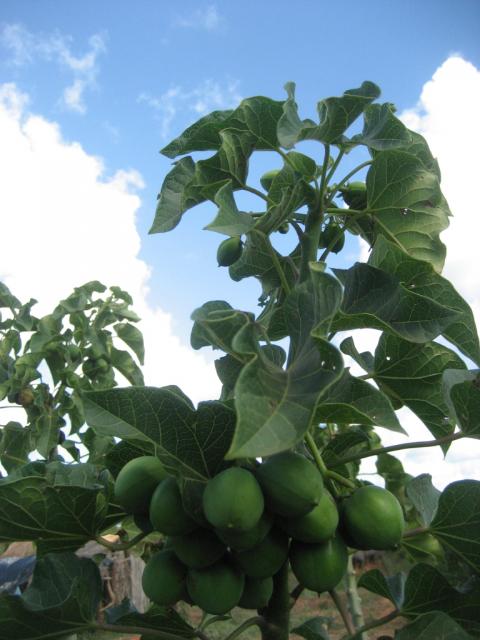Constantly the biodiesel industry is trying to find some alternative to produce eco-friendly energy. Biodiesel prepared from canola, sunflower and jatropha can replace or be integrated with conventional diesel. During first half of 2000's jatropha biofuel made the headings as a preferred and promising option. It is prepared from jatropha curcas, a plant species native to Central America that can be grown on wasteland.
Jatropha Curcas is a non edible plant that grows in the deserts. The plant grows really rapidly and it can yield seeds for about 50 years. The oil received from its seeds can be utilized as a biofuel. This can be blended with petroleum diesel. Previously it has actually been utilized twice with algae mix to fuel test flight of commercial airline companies.

Another favorable technique of jatorpha seeds is that they have 37% oil material and they can be burned as a fuel without improving them. It is likewise used for medical function. Supporters of jatropha biodiesel say that the flames of jatropha oil are smoke free and they are effectively evaluated for basic diesel motor.

jatropha curcas biodiesel as Renewable Energy Investment has drawn in the interest of lots of companies, which have actually checked it for vehicle usage. jatropha curcas biodiesel has actually been road checked by Mercedes and 3 of the vehicles have actually covered 18,600 miles by utilizing the jatropha plant biodiesel.
Since it is since of some downsides, the jatropha biodiesel have actually not thought about as a terrific eco-friendly energy. The greatest problem is that nobody knows that what precisely the performance rate of the plant is. Secondly they do not understand how big scale growing may impact the soil quality and the environment as a whole. The jatropha plant requires 5 times more water per energy than corn and sugarcane. This raises another issue. On the other hand it is to be kept in mind that jatropha can grow on tropical climates with yearly rains of about 1000 to 1500 mm. A thing to be noted is that jatropha needs appropriate irrigation in the very first year of its plantation which lasts for decades.
Recent study states that it is true that jatropha can grow on abject land with little water and bad nutrition. But there is no evidence for the yield to be high. This might be proportional to the quality of the soil. In such a case it might require high quality of land and might need the same quagmire that is faced by a lot of biofuel types.
Jatropha has one primary drawback. The seeds and leaves of jatropha are hazardous to human beings and animals. This made the Australian federal government to prohibit the plant in 2006. The government declared the plant as invasive species, and too dangerous for western Australian farming and the environment here (DAFWQ 2006).
While jatropha has promoting budding, there are variety of research difficulties stay. The value of cleansing needs to be studied due to the fact that of the toxicity of the plant. Along side an organized study of the oil yield have actually to be carried out, this is extremely important since of high yield of jatropha would most likely needed before jatropha can be contributed significantly to the world. Lastly it is likewise really essential to study about the jatropha types that can endure in more temperature level environment, as jatropha curcas is extremely much limited in the tropical environments.








